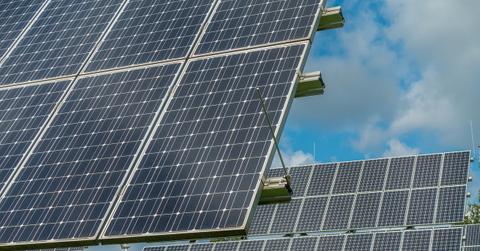100% Of Villages In India Now Have Electricity
India's government promised to give every inhabited village access to energy by this time three years ago. They delivered thanks to a mixture of restructuring the national power grid and using off-grid energy solutions.
Updated May 20 2019, 4:36 p.m. ET
Every inhabited village in India has access to electricity after Leisang village in Manipur was connected to the national power grid. As of the end of April, all villages are now powered through traditional lines or off-grid solutions. They were able to meet Prime Minister Narendra Modi’s goal of electrifying all villages by May 11th of this year.
India’s 597,464 total villages now have access to power as of April 28th. They’ve been able to accomplish this feat with a mixture of extending the national power grid and using solar panels for locations that traditional methods can’t reach. The most recent off-grid system came online in another village in Manipur, Pakol.
“[April 28th, 2018] will be remembered as a historic day in the development journey of India,” Modi said on Twitter. “...We fulfilled a commitment due to which the lives of several Indians will be transformed forever! I am delighted that every single village of India now has access to electricity.”
All of this was developed under a scheme from India’s government called Deen Dayal Upadhyaya Gram Jyoti Yojana (DDUGJY). They improved power distribution in rural areas and separated farms from households. This was done to help keep energy moving fluently when demand is high.
“We are just absolutely thrilled, excited and delighted,” P.V. Ramesh, chairman of the local Rural Electrification Corporation, told Live Mint. “We have fulfilled our mandate, our promise and the work allotted to us by the government and the honourable Prime Minister.”
Not every inch of these villages have electricity available. In order to be declared “electrified,” 10 percent of households need to have access while all public facilities like schools, hospitals, and community centers all have access to power. After building an initial power source, the next step is to stretch it out to other households.
Back in August 2015, Modi announced that they would be able to electrify all of India’s village in 1,000 days. They were able to hit their deadline in time, which would have landed on May 11th, 2018. Nearly 18,500 inhabited villages at the time still didn’t have access to power. Over 1,200 villages don’t have any residents or are used as grazing reserves.
India’s work is not done yet as they look to connect all households to energy. The next plan is to reach over 40 million homes and farmland by next March. Under the new scheme called “Saubhagya,” the government will focus on reducing fossil fuel imports and meeting their climate change goals. Back in 2015, India pledged to use 40 percent of its energy from renewable and low-carbon sources.
